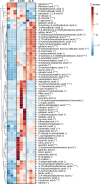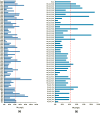Production of triacetic acid lactone from oleic acid by engineering the yeast Candida viswanathii
- PMID: 41053888
- PMCID: PMC12502205
- DOI: 10.1186/s12934-025-02841-7
Production of triacetic acid lactone from oleic acid by engineering the yeast Candida viswanathii
Abstract
Triacetic acid lactone (TAL) is a promising platform chemical to produce valuable compounds. The development of engineered microbial hosts to efficiently produce TAL from lipid-containing waste streams could be a cost-effective, sustainable and environmentally friendly approach to meet the industrial demand. In this study, we engineered the yeast Candida viswanathii, possessing robust fatty acid conversion capabilities, to develop an alternative route for TAL production from fatty acids that aims to maximize conversion of the acetyl-CoA pool generated by β-oxidation in the peroxisome. To do so, we inactivated the carnitine acetyltransferase gene to block the transport of acetyl-CoA out of the peroxisome and overexpressed the enzymes methylmalonyl-CoA carboxyltransferase, 2-pyrone synthase and pyruvate carboxylase in the peroxisome to convert acetyl-CoA into TAL. We also performed an adaptive laboratory evolution experiment to obtain mutants with higher growth rate in medium with oleic acid and observed marked differences in central carbon metabolism and organic acid production pathways between the evolved and parental strains. These strains were further engineered by integrating additional copies of TAL biosynthetic genes while reducing competing reactions like ω-oxidation and Lipid biosynthesis, resulting in up to 50-fold increase in titers relative to the initial strain, reaching 280 mg/L. This study contributes to the development of bioprocesses that valorize fatty acids as microbial conversion substrates for the production of valuable compounds.
© 2025. The Author(s).
Conflict of interest statement
Declarations. Ethics approval and consent to participate: Not applicable. Consent for publication: Not applicable. Competing interests: A.H. has a financial interest in Pyrone Systems Inc. The other authors declare they have no outside financial interests.
Figures







References
-
- Arancon RAD, Lin CSK, Chan KM, Kwan TH, Luque R. Advances on waste valorization: new horizons for a more sustainable society. Energy Sci Eng. 2013;1:53–71.
-
- Patel A, Sarkar O, Rova U, Christakopoulos P, Matsakas L. Valorization of volatile fatty acids derived from low-cost organic waste for lipogenesis in oleaginous microorganisms-a review. Bioresour Technol. 2021;321:124457. - PubMed
-
- Ahmad T, Belwal T, Li L, Ramola S, Aadil RM, Abdullah, et al. Utilization of wastewater from edible oil industry, turning waste into valuable products: A review. Trends Food Sci Technol. 2020;99:21–33.
MeSH terms
Substances
Grants and funding
LinkOut - more resources
Full Text Sources
Miscellaneous

